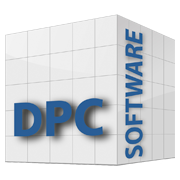
Microeconometrics Using Stata, Second Edition - VOL I + II - eBook
Artikelnummer: 7428389e
Beschreibung
Comment from the Stata technical group
Any applied economic researcher using Stata and anyone teaching or studying microeconometrics will benefit from Cameron and Trivedi's two volumes. They are an invaluable reference of the theory and intuition behind microeconometric methods using Stata. Those familiar with Cameron and Trivedi's Microeconometrics: Methods and Applications will find the same rigor. Those familiar with the previous edition of Microeconometrics Using Stata will find the same explanation of Stata commands, their interpretation, and their connection with microeconometric theory as well as an introduction to computational concepts that should be part of any researcher's toolbox.
This new edition covers all the new Stata developments relevant to microeconometrics that appeared since the the last edition in 2010. It also covers the most recent microeconometric methods that have been contributed by the Stata community but have not yet made it to Stata. For example, readers will find entire new chapters on treatment effects, duration models, spatial autoregressive models, lasso, and Bayesian analysis.
The first volume introduces foundational microeconometric methods, including linear and nonlinear methods for cross-sectional data and linear panel data with and without endogeneity as well as overviews of hypothesis and model-specification tests. Beyond this, it teaches bootstrap and simulation methods, quantile regression, finite mixture models, and nonparametric regression. It also includes an introduction to basic Stata concepts and programming and to Mata for matrix programming and basic optimization.
The second volume builds on methods introduced in the first volume and walks readers through a wide range of more advanced methods useful in economic research. It starts with an introduction to nonlinear optimization methods and then delves into binary outcome methods with and without endogeneity; tobit and selection model estimates with and without endogeneity; choice model estimation; count data with and without endogeneity for conditional means and count data for conditional quantiles; survival data; nonlinear panel-data methods with and without endogeneity; exogenous and endogenous treatment effects; spatial data modeling; semiparametric regression; lasso for prediction and inference; and Bayesian econometrics.
This is just a brief overview of the contents of the book, but it exemplifies the breadth and ambition of the two volumes. In sum, it is an essential book for any applied researcher and advanced microeconometrics courses.
